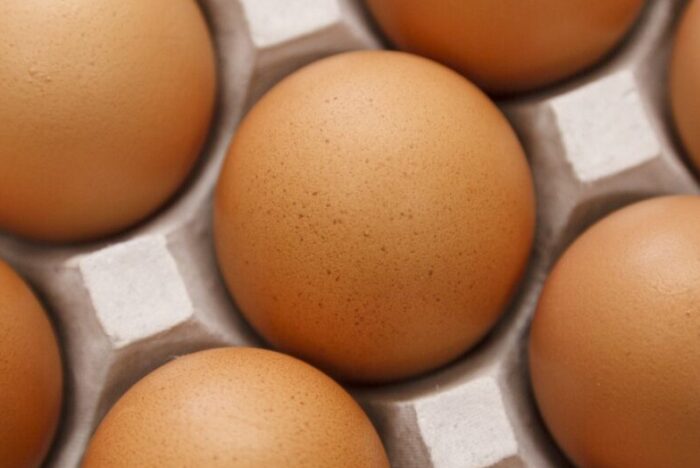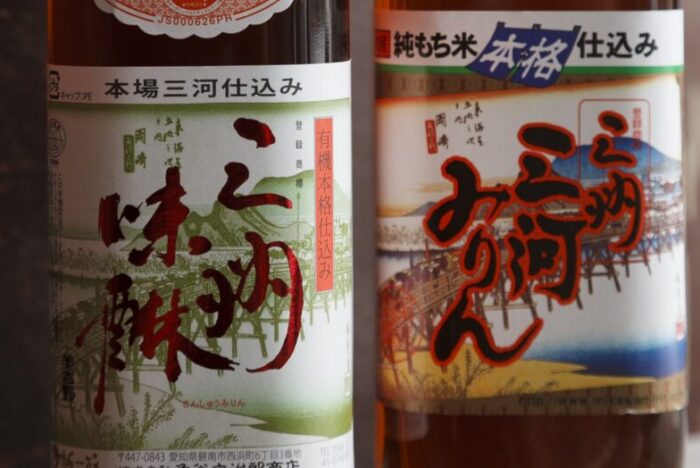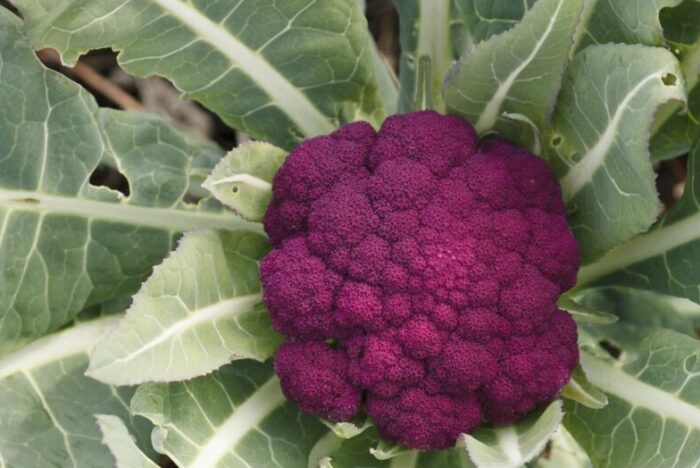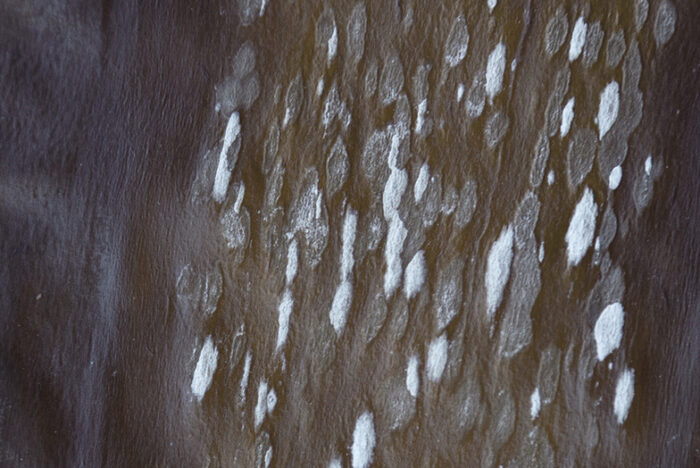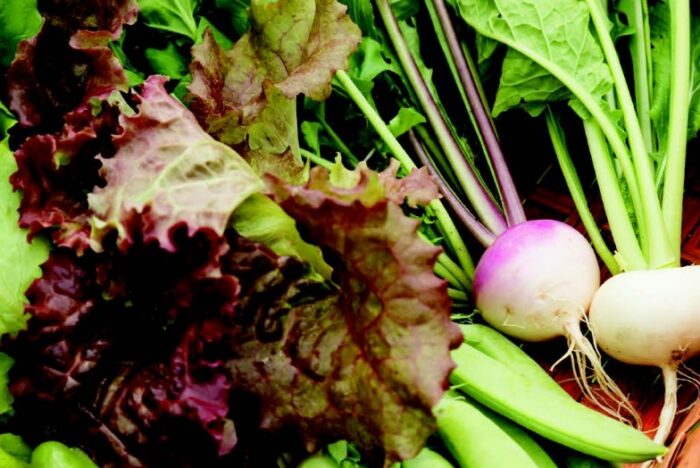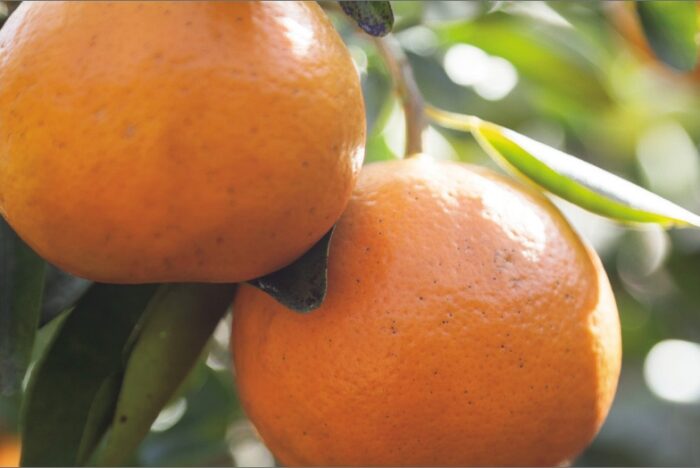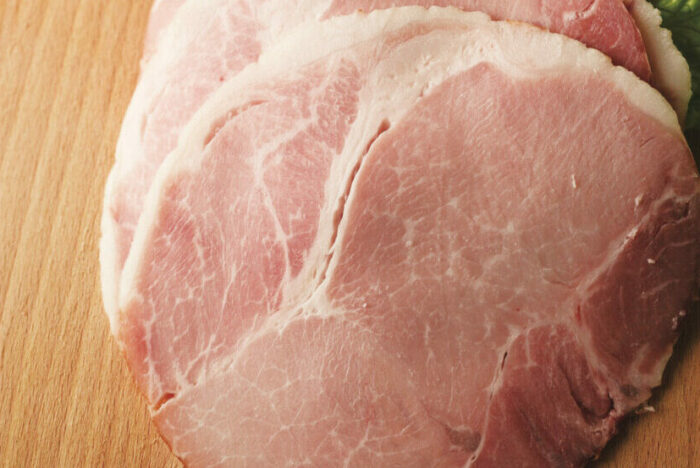Japan[Nagano/Tokyo] Beyond ordinary itinerariesVol.7 Sumida City, Tokyo / Obuse Town, Nagano prefecture
Two Towns Bridged by Hokusai
2018.03.22
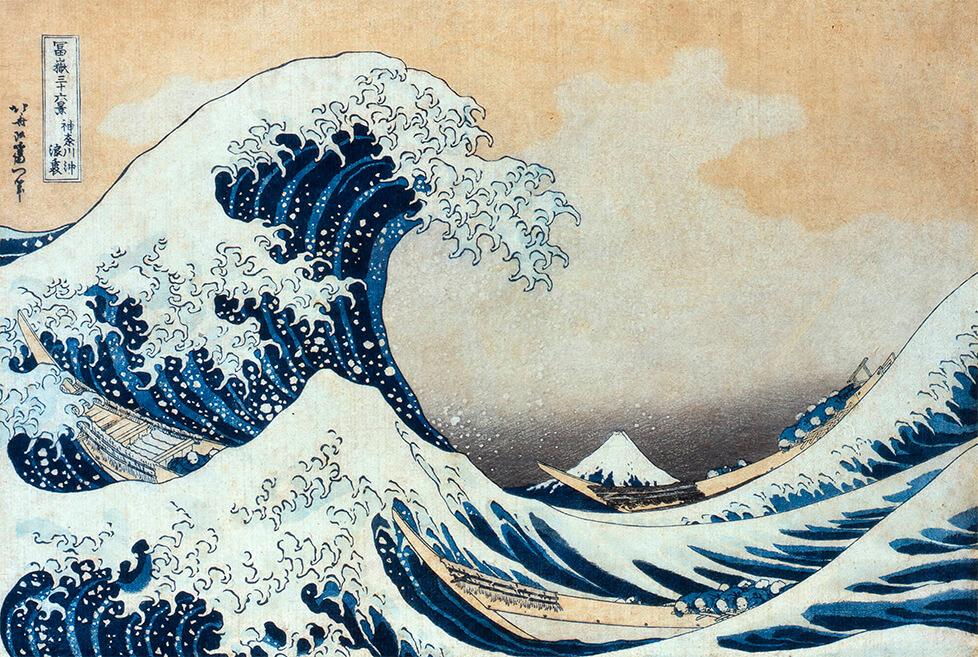
The Great Wave off Kanagawa, Katsushika Hokusai, Curtesy of Sumida Hokusai useum
text by Rei Saionji / photographs by Hide Urabe
“Without the Japanese printmaker Hokusai, Impressionism might never have happened.” This comment was made by art critic Jason Farago in 2015 during an exhibition of the works of Katsushika Hokusai (1760-1849) at the Museum of Fine Arts in Boston, USA. Hokusai is one of the most famous Japanese artists in the world. In fact, he was the only Japanese person to be nominated in Life Magazine’s The 100 Most Important Events and People of the Past 1,000 Years published in 1998.
In 2016, the Sumida Hokusai Museum was established in Sumida City, Tokyo, where Hokusai was born and spent most of his life. This museum, however, is not the first to specialize in Hokusai’s artworks. The first museum to showcase Hokusai’s works has been open for about forty years in Obuse in Nagano Prefecture, and is called Hokusai-kan. Why in Obuse, a place over 250 kilometers away from his birthplace? You will know the answer by visiting two places, Sumida and Obuse.
SUMIDA CITY
East End of Tokyo, Hokusai’s Birthplace
One of the major attractions for first-time tourists in Tokyo is the tallest tower in Japan, the Tokyo Skytree, but not many would think to explore the town beneath the tower. This is our secret for those who want to know more about Japanese life. This town, separated from Asakusa by the Sumida River, is called Sumida-ku (Sumida City), which is also known as the town of craftsmen.
Here, you will notice that the streets are laid out as a grid. This is because this town was recreated by the Tokugawa Shogunate after a big fire in 1657 which burned down over 60% of Edo City. The Edo government reclaimed the ground and developed waterways to ensure that the town was resistant to fire. Temples, shrines and houses of important samurai in the central part of Edo were relocated in this East-end town. As the saying goes, “where there is demand, there will be supply,” and as such craftsmen and merchants gathered in this “new” town of important samurai. The town flourished as a hub for popular culture, including sumo tournaments and flower viewing, with many cultural practices continuing today.
While the town of Sumida was recreated to be resistant to fire, it unfortunately did not survive the fire caused by the Great Kanto Earthquake in 1923 and the bombing during World War II. Most of the buildings in the area were burned down. But today you can still see the streets designed in a grid and feel the spirit of craftsmanship that has pervaded the town since the Edo period.
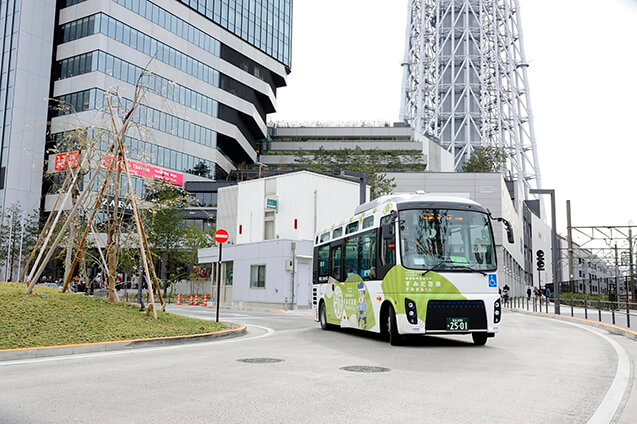
To start your adventure in Sumida City, head for Oshiage Station by the Hanzomon Line or the Toei Asakusa Line, or Ryogoku Station by the JR Sobu Line or the Toei Oedo Line. A one-day ticket (300yen) that is valid for three city circular buses is recommended.
Ushijima Jinja (Ushijima Shrine)
Guardian Ox of Sumida City
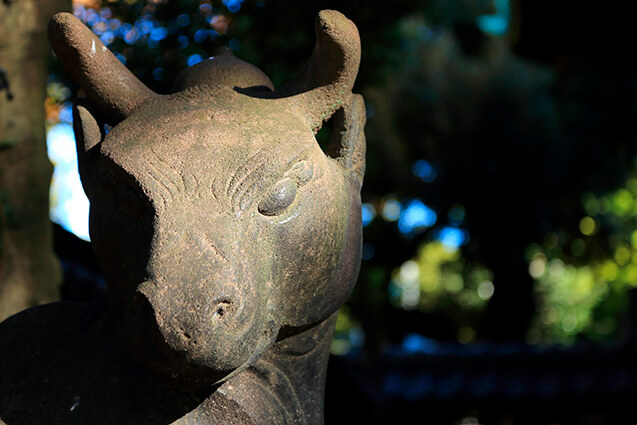
Ushijima Shrine is a small shrine located inside Sumida Park next to Kototoi Bridge, over the Sumida River. The word “Ushi-jima” literally means Ox Island. Even though you will see no ox now aside from an ox statue in the shrine, there is a reason for its name. This shrine was relocated after the Great Kanto Earthquake: it was originally located about 1 km upstream of the Sumida River, which was the delta. The shrine was thus on an island-like place. In that area there was a national cattle farm (established in 701-704!) hence the name of ‘Ox Island.’ Now the landform is different because of the reclamation and there is no Ox Island any more.
In the hall, you will see a large black-and-white photograph on the left wall. That is the photo of the votive picture, Susanoo-no-Mikoto Conquering the Evils of Plague painted by Hokusai when he was 86 years old, four years before he passed away. This is one of the largest (2.76m x 1.26m) hand-drawn pictures of his closing years. Unfortunately, the actual picture was burned during the Great Kanto Earthquake. But later, the photo of the picture was found in an art magazine issued in the Meiji era (1868-1912), and it was enlarged to be placed here.
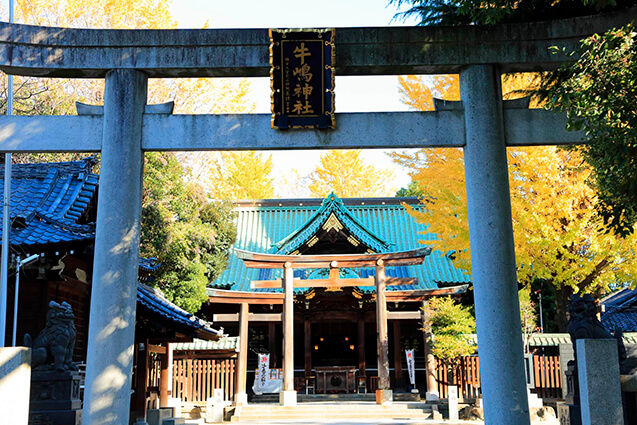
Ushijima Shrine, established in 860, has more than a thousand years of history. Since the Edo period, the statue of the ox in the shrine has been believed to have healing power and it is called “Nade-ushi”, or “the Ox to be Stroked.” Stroke the part of your body that is weak or hurts and then stroke the ox in the corresponding place. The ox will make it better!
◎ Ushijima Jinja (Ushijima Shrine)
http://visit-sumida.jp/spot/6163/
1-4-5 Mukojima, Sumida-ku
☎ 03-3622-0973
A 7-minute walk from Honjo Azumabashi Station of the Toei Asakusa Line or Tokyo Skytree Station of the Tobu Skytree Line
Hossho-ji (Hossho Temple)
The Temple of the North Star that Led Hokusai
To expand your knowledge of Hokusai, we recommend another brief detour to a small temple named Hossho-ji, which is commonly referred to as “Myoken-sama of Yanagishima” (Deity of Myoken at Yanagishima). You will find this temple on the way to Hokusai Museum from Oshiage Station by a circular bus (southern route). It is a temple of the Nichiren Sect and has more than 500 years of history. More importantly, this is the temple that Hokusai worshiped.
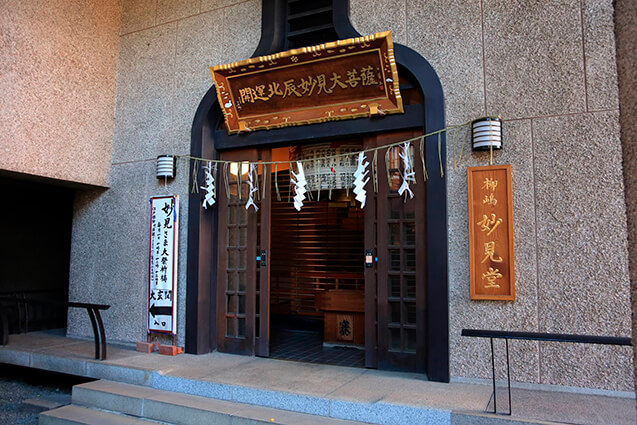
Hossho-ji was established in 1492 in the area called Yanagishima, where the Deity of the North Star descended and shone brilliantly.
Hokusai, at the age of 18, apprenticed himself to Katsukawa Shunsho, the leading ukiyo-e artist in the latter half of the 18th century. However, he was expelled at the age of 34, which resulted in financial hardship and compelled him to give up his life as an artist. According to legend, before making his final decision about his career as an artist, he prayed for 21 days to the Deity of Myoken at Yanagishima. After his final prayer, he was struck by lightning while traveling home, causing him to faint. After this incident, he became a prominent ukiyo-e artist! We will never know whether Hokusai was struck by the lightning or the touch of a deity. In fact, Myoken is the Deity of Polaris, the North Star.
◎ Hossho-ji, Yamagishima Myoken (Hossho Temple)
http://www.yanagishima-myouken.net
5-7-7 Narihira, Sumida-ku, Tokyo
☎ 03-3625-3838
8 minutes on foot from Oshiage Station of the Keisei Line and the Toei Asakusa Line
6 minutes on foot from Oshiage Station of the Tokyo Metro Hanzomon Line
3 minutes on foot from the bus station “Yanagishima Myokenzan Hosshoji Iriguchi” (reached via the circular bus (southern route))
Sumida Hokusai Museum
The Junction of Cutting-Edge Cultures, Old and New
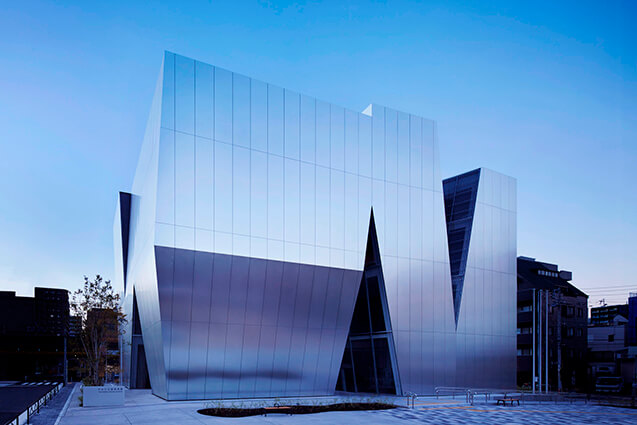
©Forward Stroke
Sumida Hokusai Museum has a collection of more than 1,500 examples of Hokusai’s artworks. Moreover, here you can learn about how he worked and what his hometown, Sumida, was like in the Edo period. In the permanent exhibition area, various kinds of multilingual panels and touchscreens allow you to connect to Hokusai and his works in a familiar way. This innovation is very unique, and makes this museum, along with its unique architecture, a fascinating fusion of traditional and modern culture.
In a park which used to be the main residence of the Tsugaru Family of the Hirosaki Feudal Domain (now called Aomori) in Edo (now called Tokyo) stands a super-modern building that gives off a silver brilliance. This is Sumida Hokusai Museum, an exceptional piece of architecture. Usually, a museum of traditional art is constructed in a traditional way. This building, however, breaks the mold. It deviates from what one expects from a standard building; it has no “front” or “back” entrance. This surprising feature is reasonable if you take into consideration the kind of artist Hokusai was. The layout of his artworks flattens laws of perspective, his sketches and fluid mark-making are thought to have inspired the dynamic line work of manga, and he pursued colors of paint that perfectly realized the real colors that he saw… With these characteristics, he could be categorized as a Pop Artist himself!
On the fourth floor near the entrance of the permanent exhibition, you will see a large hand-painted picture that you may recognize. It is Susanoo-no-Mikoto Conquering the Evils of Plague which you saw in Ushijima Shrine, but this time in color! It was recreated from that black-and-white photo through research in the photographic sciences and humanities. Here researchers have sought to capture the original colors used by Hokusai, reproducing the way he created the colors and how he drew the lines. The print was realized by a high-tech inkjet printer from the Toppan Printing Company, and all of the extra detailing, such as gold leafing and gold painting, were realized by professional craftsmen. The well-reproduced colored picture will conjure up an image of Hokusai more clearly.
◎ Sumida Hokusai Museum
http://hokusai-museum.jp/
2-7-2 Kamezawa, Sumida-ku, Tokyo
☎ 03-5777-8600
Opening hours: 9:30 a.m. to 5:30 p.m.
Entry is allowed up until 30 minutes before the museum closes.
Closing day: Monday (or the following weekday if public holiday falls on Monday)
5 minutes on foot from Ryogoku Station of the Toei Oedo Line A3 Exit
9 minutes on foot from Ryogoku Station of the JR Sobu Line East Exit
5 minutes on foot from the bus stop “Toei Ryogoku Eki Mae” (reached via the circular bus)
In front of the bus stop “Sumida Hokusai Bijutsukan Mae” (reached via the circular bus)
Sumida, the Town of Craftsmen
The Town Where the Craftsmanship of the 17th Century Still Lives
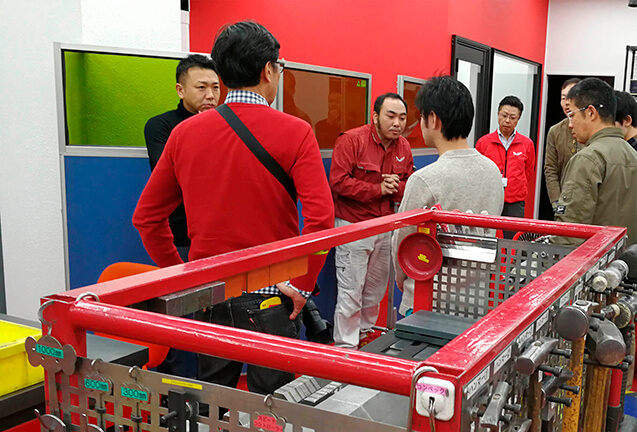
Sumida is a town of new beginnings. The production of daily commodities by craftsmen began in the 17th century, and the light industry began soon after the modernization of Japan in the 19th century. Many small factories of textiles, chemical works, machinery, metal, glass, leather and printing have been established in Sumida. Now about 3,470 factories and ateliers are operational in the area. The spirit of craftsmanship is to create something sustainable that people can use with love for a long time, just as we treasure artworks. Sumida is a town where you can feel this spirit. Just as the North Star, which led Hokusai, is always shining in the north sky, Sumida, the town which recovered from two conflagrations, will be shining forever in the East end of Tokyo.
Since 2012, the area has held an annual event called “Sumi-Fa”, during which people can visit factories to see and try their hand at production processes. Of course, there are some factories where a factory tour is available outside this event period. Why don’t you have a close look at craftsmen at work? It might help you imagine Hokusai at work in his studio!
MERIKOTI (Knit Room Shoes)
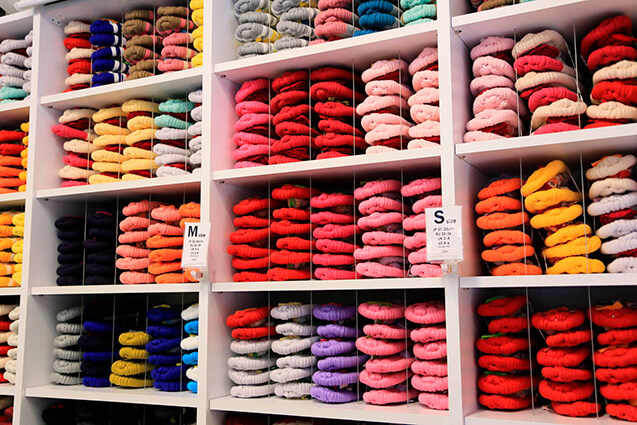
Do you know the word “Meriyasu?” It is a word even many Japanese people, especially the younger generation, don’t know. “Meriyasu” means “knitting,” and was used up until the 1960s. Meriyasu is said to have been derived from the Portuguese word “meias” or the Spanish word “medias,”. both of which mean “socks.” Japanese traditional socks called tabi, which go with a kimono, as you may already know, and are cotton-textile socks with a separation between the big toe and the other toes. They are made to fit zori sandals. Given the abundance of knitted goods one can make, it is easy to imagine how surprised many people are to hear that the Japanese word for knitting comes from a word meaning “socks.”
MERIKOTI is a shop that is just a one-minute-walk from Sumida Hokusai Museum, where special knitted indoor shoes are sold (in Japan, we call these “room shoes”). Its room shoes have a distinct sense of form and color. The form adheres fundamentally to that of traditional zori, but the colors used are very modern and avant-garde. This shop sells a fusion of room shoe styles - old and new, East and West – and will absolutely catch your eye. You will not miss it!
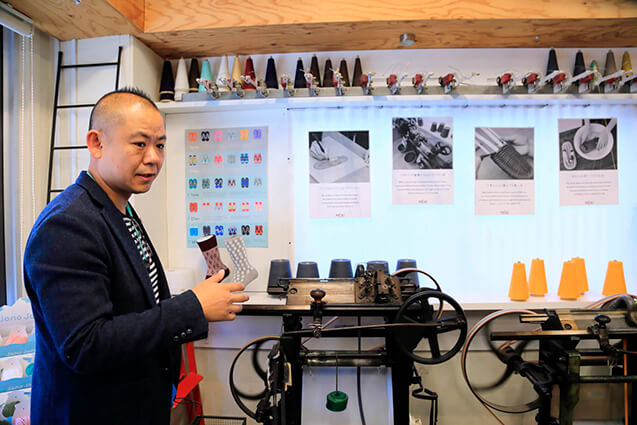
Mr. Tsudoi Kodaka of MERIKOTI/Orange Tokyo. The shop + atelier was established in 2014. You can also see an old knitting machine at work. Workshops in cloth zori making and knitting are available with an advance reservation.
◎ MERIKOTI
http://www.meri-koti.tokyo
Hirai Building 1st floor, 1-12-10, Kamezawa, Sumida-ku, Tokyo
☎ 070-6986-0708
Opening hours: 10:00 a.m. to 6:00 p.m.
No closing day (except for New Years holidays)
5 minutes on foot from Exit A3 of Ryogoku Station of the Toei Oedo Line
10 minutes on foot from the East Exit of Ryogoku Station of the JR Sobu Line
Kataoka Byobuten (Kataoka Folding Screens)
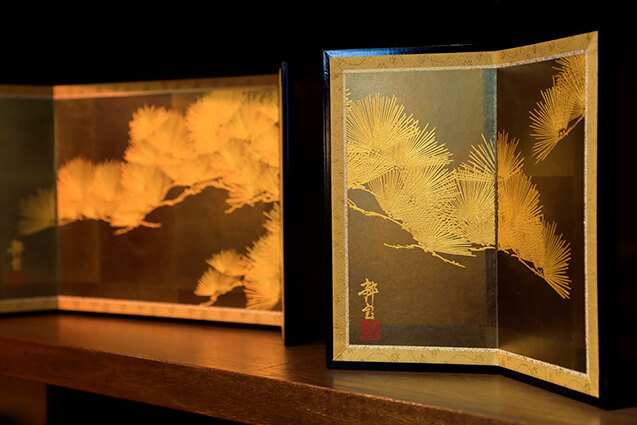
Folding screens, even though they are part of the Japanese tradition, are becoming an endangered form of craftsmanship. The craft originated in the 8th century, where screens were placed at one’s futon bedside near a pillow, or placed to partition a room. From the 16th to the 19th century, before the modernization of the nation, every castle had well-decorated folding screens which were recognized as art. The beauty of the folding screens was recognized overseas as they were exported to Europe.
“The pictures drawn on the screen draw the attention of people, but the system used for folding screens is also splendid. The paper-made hinge invented in the 14th–15th century is the key,” says Mr. Kyoichi Kataoka, the president of Kataoka Folding Screen. He makes folding screens that match modern life styles in accord with his philosophy that even tradition needs to correspond to the demands of the present day. He also makes original folding screens using used kimonos, obi belts and scarves.
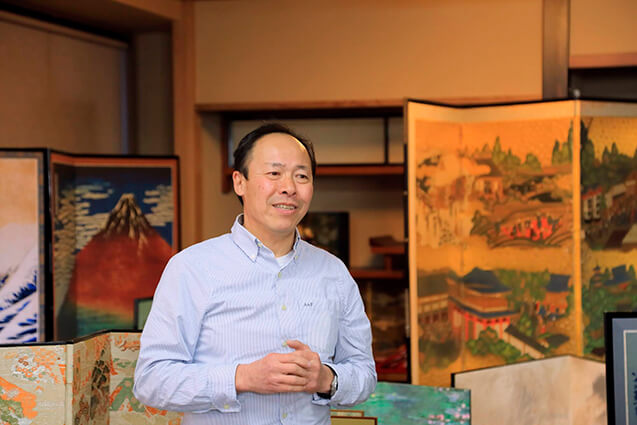
Mr. Kyoichi Kataoka of Kataoka Folding Screens. Kataoka Folding Screen is the only shop in Tokyo to specialize in folding screens. He holds workshops in making folding screens, which is one of the ways he continues the tradition (reservation required). The shop also has a small museum of folding screens where you can see and touch various samples.
◎ Kataoka Byobuten (Kataoka Folding Screens)
http://www.byoubu.co.jp/
1-31-6 Mukojima, Sumida-ku, Tokyo
☎ 03-3622-4470
Opening Hours: 10:00 a.m. to 5:00 p.m.
Closing Day: Sunday and Holidays (some Saturdays)
One minute on foot from Tokyo Skytree Station of the Tobu Skytree Line
7 minutes on foot from Oshiage Station of the Toei Asakusa Line and the Hanzomon Line
Tsukada Kobo (Atelier Tsukada) - Edo Kimekomi Dolls
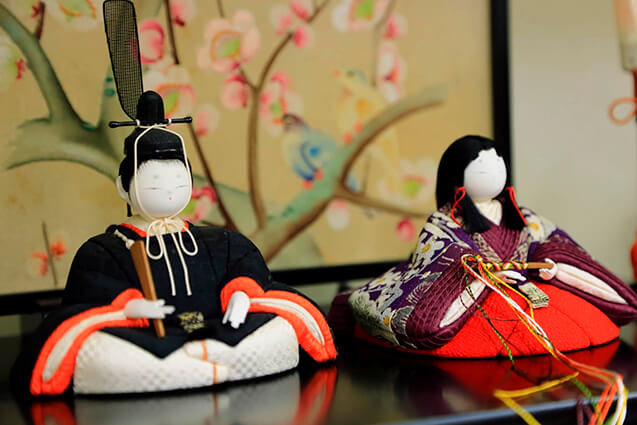
Japanese dolls are roughly divided into two categories: Ichimatsu dolls and kimekomi dolls. Ichimatsu dolls are usually made to be held in the arms, dressed and posed. Briefly, they are dress-up dolls. On the other hand, kimekomi dolls are not to be played with and their clothes (actually kimono) are not changeable. The kimonos which these dolls wear are not complete, but are instead made with many pieces of cut cloth. The base of the wooden doll is carved so that the edges of the cloth can be tucked inside grooves and sealed in place with glue. The key to making refined kimekomi is where and how you create these grooves.
At Atelier Tsukada, well-trained craftsmen make kimekomi dolls from the beginning to the end, including base-making, carving, dressing, face-painting and hair-dressing. The main dolls made at Atelier Tsukada are hina dolls, which are the emperor and empress dolls made for the Girls’ Festival day on March 3rd. The atelier also makes famous beckoning cats (maneki-neko), birds and animals. Easy courses in making a small ball or a small owl with the kimekomi technique are available with an advance reservation.

Mr. Eishun Tsukada, a prize-winning doll maker and owner of Atelier Tsukada. He became a disciple of his uncle who was the master of kimekomi doll-making soon after he graduated from high school. At the age of 24 he became independent and started his own atelier. In the small museum of kimekomi dolls found inside his atelier, various kinds of hina dolls, bases, tools and materials are shown to enable you to become more familiar with kimekomi dolls.
◎ Tsukada Kobo (Atelier Tsukada)
http://www.edokimekomi.com/ 2-11-7 Mukojima, Sumida-ku, Tokyo
☎ 03-3622-4579
8 minutes on foot from Oshiage Station Exit A3 of the Toei Asakusa Line and the Hanzomon Line
10 minutes on foot from Tokyo Skytree Station of the Tobu Isezaki Line
Atelier Sogeikan – Edo Calligraphy
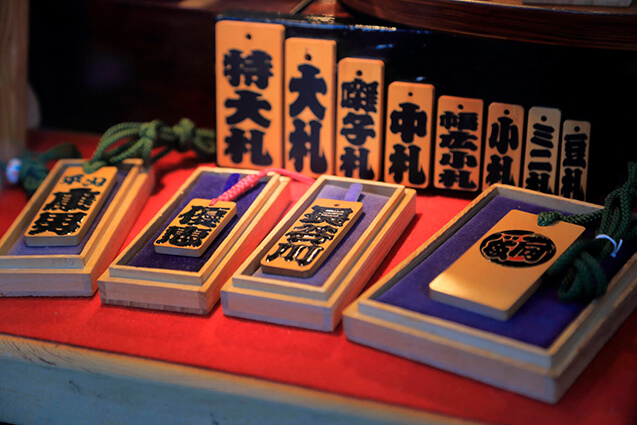
Edo, as you may know, refers to the place now called Tokyo, as well as the period from 1603 to 1868 when the Tokugawa Shogunate in Edo ruled Japan. So, Edo moji is the font family invented and commonly used in the Edo period. Eventually, Edo moji was not just considered to be a typeface but also to be a form of calligraphy. In those days, signboards of kabuki theaters, sumo tournaments and rakugo entertainment were handwritten, and each calligraphy style has its own characteristics, name and meaning.
Atelier Sogeikan is a professional calligraphy shop. The master writes whatever and however clients desire with beautiful kanji in the Edo style. There are several kinds of enjoyable workshops in which the master teaches you how to write Edo calligraphy and write anything you want in kanji on a fan or a lantern (reservation required). Kanji itself is already impressive to foreign tourists, but kanji in the Edo style is even more impressive.
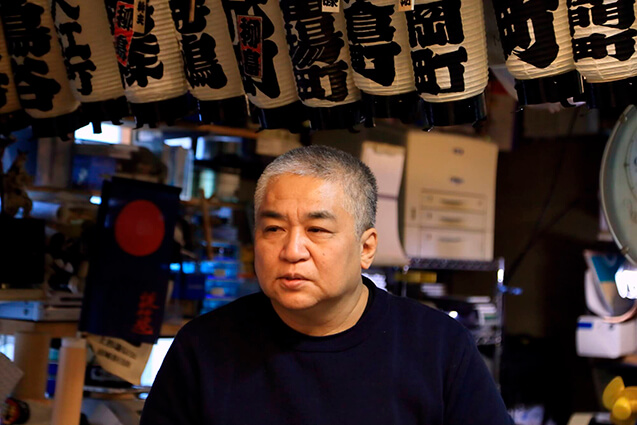
Mr. Tomohiro Oishi, the master calligrapher. If you are interested, make a reservation at the workshop and take a good interpreter with you. He will give you a very interesting and unique explanation of the styles of Edo calligraphy, but only in Japanese. He will also give you your name in kanji!
◎ Atelier Sogeikan
http://visit-sumida.jp/spot/6008/
3-8−2 Yokokawa, Sumida-ku, Tokyo
☎ 03-3622-2381
Opening hours: 10:00a.m. to 6:00 p.m.
Closing day: Irregular
10 minutes on foot from Kinshicho Station of the JR Sobu Line and the Hanzomon Line
8 minutes on foot from Oshiage Station of the Hanzomon Line, the Keisei Line and the Toei Asakusa Line
12 minutes on foot from Tokyo Skytree Station of the Tokyo Skytree Line
Sumida Edo-Kiriko Kan (The House of Edo-Kiriko)
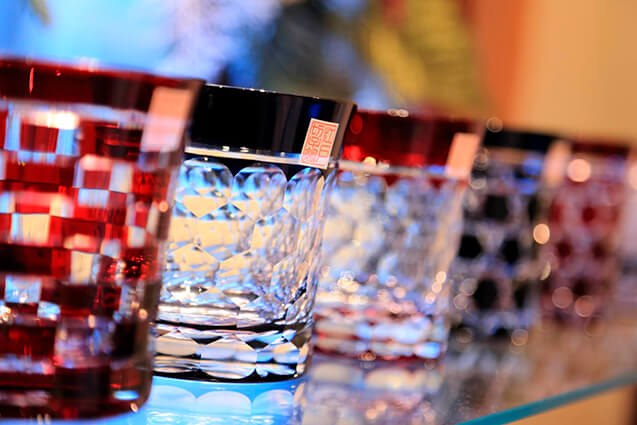
Edo-kiriko. (cut glass of the Edo style) is said to have been invented in 1834 by a glass merchant in Edo. He engraved the surface of the glass with an emery stone to emulate British cut glass. Subsequently the techniques of glass-cutting improved so quickly that edo-kiriko amazed Commodore Perry of the U. S. Navy, who came to Edo seeking trade with Japan in 1853. Since then edo-kiriko has been just one of the crafts that represents Japanese beauty.
What makes edo-kiriko stand out from other styles of cut glass is its patterns. Each pattern has its own name; The pattern called Nanako looks like fish eggs connected together. Yarai resembles a rain of arrows. Kagome depicts the mesh of a bamboo basket. Sokogiku. depicts chrysanthemum flowers on the bottom of the glass. The checkered pattern used in the logo of the Olympic Games in 2020 is also used for kiriko and its name is Ichimatsu.
In Edo-Kiriko Kan (The House of Edo-Kiriko), you will find various kinds of beautiful edo-kiriko products and also see firsthand these interesting kiriko patterns, as well as the production process and the materials and tools used. Moreover, you can see craftsmen at work. Workshops in creating your original kiriko work are also available with an advance reservation.
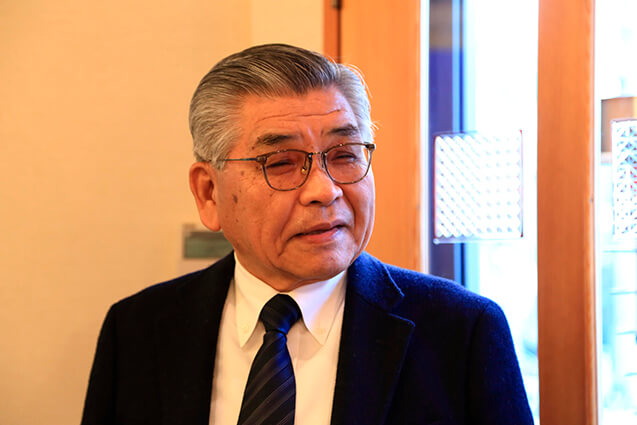
Mr. Tatsuo Hirota, Chairman of the Hirota Glass Company.Edo-Kiriko Kan is a showroom of the Hirota Glass Company, established in 1899. In their main office building, a five-minute walk from Edo-Kiriko Kan, there is also a shop and a showroom of Edo-style glass.
◎ Sumida Edo-Kiriko Kan (The House of Edo-Kiriko)
http://www.edokiriko.net/
2-10-9, Taihei, Sumida-ku, Tokyo
☎ 03-3626-4148
Opening Hours: 10:00 a.m. to 6:00 p.m.
Closed on Sundays and holidays
7 minutes on foot from JR Kinshi-cho Station
Kume Sen-i Kogyo Factory Shop (KUME.JP Factory Shop) - T-shirts
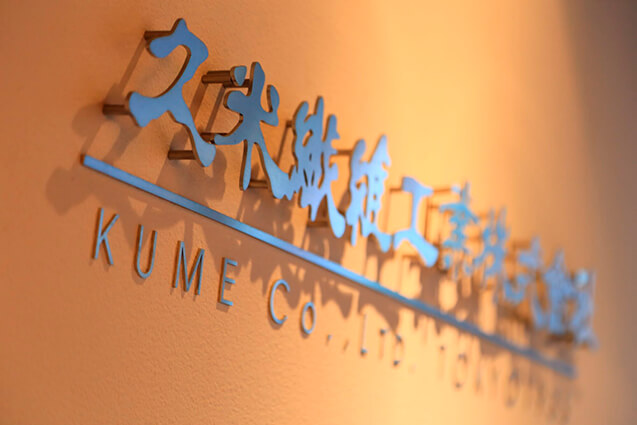
In economically-developed countries, it has sadly become difficult to find T-shirts made locally. In Japan, a T-shirt with “Made in Japan” printed on its woven tag is very rare. However, in Sumida, there is a company which has continued to make T-shirts since the 1950s, when very few Japanese knew what T-shirts were. The company is called Kume Sen-i, and its T-shirts are called Iro-Marukubi (“Colored Round Neck”). They are very durable and are resilient to losing their shape around the neckline due to their special fabrication process. Five-dollar T-shirts that easily get damaged in one season are incomparable to Iro-Marukubi! “The more that Iro-Marukubi are put on, the more profound their charm becomes. People will feel more attached to them if they wear them over a long period of time. This is the spirit of Japanese craftsmanship,” says Mr. Kume.
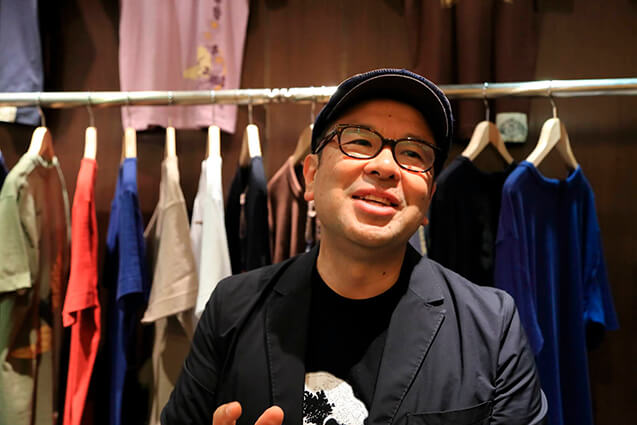
Mr. Nobuyuki Kume, Chairman of Kume Sen-i Company.The Hokusai T-shirts sold in Hokusai Museum are made by Kume Sen-i. Workshops in making an original T-shirt with silkscreen are available with an advance reservation.
◎ Kume Sen-i Kogyo Factory Shop (KUME.JP Factory Shop)
http://kume.jp/
3-9-6, Taihei, Sumida-ku, Tokyo
☎ 03-3625-4188
Opening Hours: 10:00 a.m. to 6:00 p.m.
Closing day: Saturday, Sunday and some Holidays
6 minutes on foot from Kinshicho Station of the JR Sobu Line
4 minutes on foot from Kinshicho Station of the Hanzomon Line
Vol.7 Sumida City, Tokyo / Obuse Town, Nagano prefecture
Hokusai or Snow Monkeys?
Two Towns Bridged by Hokusai
(Sumida City,Tokyo / Obuse Town,Nagano prefecture Booklet PDF)
(Sumida City,Tokyo / Obuse Town,Nagano prefecture Booklet PDF [for printing])
This project is supported by the Kanto Bureau of Economy, Trade and Industry.


